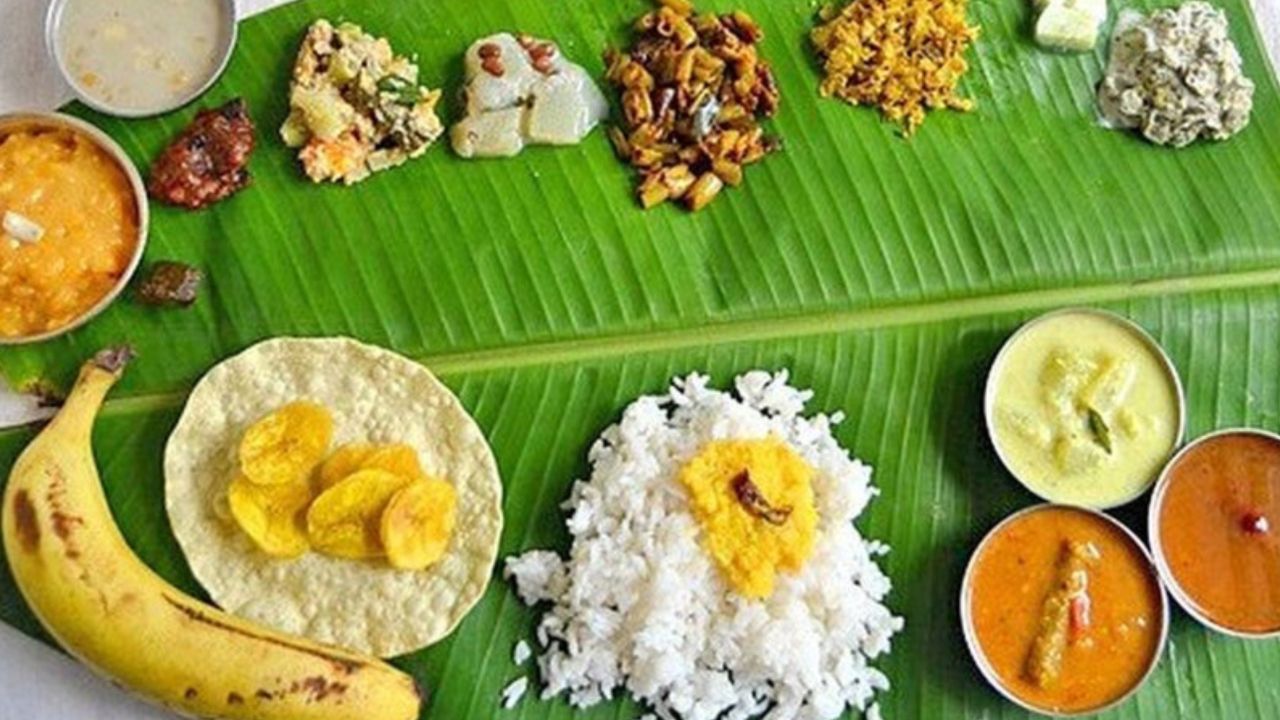Sattvic Diet 101: What You Need to Know About Yogic Food
The sattvic diet is a fundamental aspect of the yogic tradition, emphasizing the profound impact that our dietary choices have on our health, emotions, and psychological well-being. In yoga, diet is not just about nourishment but is integral to our holistic development. The food we consume, and the manner in which we consume it, directly influence our body’s energy, vitality, and purity, as well as our mental and spiritual clarity.
The sattvic diet is a fundamental aspect of the yogic tradition, emphasizing the profound impact that our dietary choices have on our health, emotions, and psychological well-being. In yoga, diet is not just about nourishment but is integral to our holistic development. The food we consume, and the manner in which we consume it, directly influence our body’s energy, vitality, and purity, as well as our mental and spiritual clarity.
As yoga reshapes our relationship with our bodies, we come to view them as vessels for holistic growth. Food, therefore, becomes a sacred ritual—a way to express gratitude for nature’s gifts and a vital component of our overall well-being.
Eating mindfully involves selecting foods that are beneficial for both ourselves and the environment. It encompasses thoughtful preparation and turning each meal into a moment of appreciation and devotion. By honoring the food we offer to our bodies, we support their renewal and optimal functioning, reflecting our reverence for life’s wonders.
What is the Sattvic Diet?
The sattvic diet emphasizes pure, fresh, and minimally processed vegetarian foods to promote mental clarity, balance, and spiritual growth. It focuses on simplicity in preparation and digestion, aiming to support overall well-being and inner harmony.
Core Principles:
1. Purity and Balance: The sattvic diet focuses on purity of mind and body, promoting clarity, calmness, and spiritual growth. It aims to create a balanced and serene state of being.
2. Vegetarian: The diet is strictly vegetarian, avoiding meat, fish, and eggs. This is based on the belief that such foods are tamasic (dull) or rajasic (overstimulating), which can disrupt mental and spiritual harmony.
3. Fresh and Natural: Emphasis is placed on consuming fresh, natural, and minimally processed foods. The diet favors foods that are organic and grown without synthetic chemicals.
4. Easy to Digest: Foods should be easy on the digestive system to ensure that they provide nourishment without causing discomfort or imbalance.
5. Minimal Cooking: Simple cooking methods are preferred to preserve the natural vitality and nutrients of the food. Overcooking or extensive processing is avoided.
Key Components:
1. Fruits and Vegetables: Fresh, seasonal fruits and vegetables are central to the diet. They should be organic and preferably locally grown.
2. Whole Grains: Foods like brown rice, oats, quinoa, and barley are included for their wholesome nutrients and energy.
3. Legumes and Beans: Lentils, chickpeas, and other legumes provide essential proteins and are easy to digest.
4. Nuts and Seeds: These are included for their healthy fats and proteins, but should be consumed in moderation.
5. Dairy: Pure, fresh dairy products like milk, ghee (clarified butter), and yogurt are often included, provided they are from ethical and clean sources.
6. Herbs and Spices: Mild spices such as turmeric, cumin, and coriander can be used for flavoring and their health benefits, but strong or stimulating spices like chili are avoided.
Dietary Practices:
- Mealtime: Eating at regular intervals, in a calm and mindful manner, is encouraged. Meals are often taken in a peaceful environment to enhance digestion and absorption.
- Food Preparation: Preparing food with love and care is considered important. The intention behind cooking and serving is believed to impact the quality of the food.
- Avoiding: The sattvic diet avoids foods that are overly processed, stale, or left-over. It also steers clear of fermented foods, excessive sugar, caffeine, and highly stimulating substances.
Benefits:
- Mental Clarity: A sattvic diet supports mental sharpness, focus, and emotional stability.
- Physical Health: It promotes overall well-being, a strong immune system, and balanced energy levels.
- Spiritual Growth: By aligning with principles of purity and balance, the diet helps facilitate spiritual practices and personal growth.
In essence, the sattvic diet aligns with the yogic philosophy of living in harmony with oneself and the environment, supporting both physical health and spiritual development.
3 Energy and Its Types
Energy in yogic philosophy is categorized into three types:
- Rajas: Represents movement and stimulation, driving activity and change.
- Sattvas: Symbolizes purity, balance, and harmony, fostering clarity and calm.
- Tamas: Reflects inertia and darkness, leading to lethargy and stagnation.
The yogic diet prioritizes foods that enhance Prana (vital energy), emphasizing unprocessed, organic, and environmentally respectful options.
This focus on purity not only supports physical health but also promotes mental clarity and emotional balance, aligning with the vegetarian principles of the diet.
The Ethics of Yogi Begins With Food
In yoga and Ayurveda, food is viewed as a form of medicine essential for maintaining balance and promoting health. Each individual’s diet should be tailored to their unique needs, such as the specific requirements of their dosha in Ayurveda.
Balanced, nutritious foods act as both curative and preventive medicine, supporting the body’s natural healing abilities. By choosing easy-to-digest and cleansing foods, we enhance our physical strength.
It also facilitates toxin elimination and maintains a positive environment, which is crucial for preventing disease. Disease often arises from blockages or toxin accumulation in our subtle bodies, including the nadis, chakras, mind, and emotions.
Sattvic Diet: The Foundation of Yogic Nutrition
A Sattvic diet is a cornerstone of the Yogic tradition. It emphasizes pure, wholesome, and easily digestible foods that promote mental clarity, emotional balance, and spiritual well-being.
Key Characteristics of a Sattvic Diet:
- Purity: Sattvic foods are considered pure and uncontaminated. They are often organic and minimally processed.
- Wholesomeness: Sattvic foods are nutrient-dense and provide the body with essential vitamins, minerals, and energy.
- Digestibility: They are easy to digest and do not cause digestive discomfort.
- Freshness: Sattvic foods are ideally fresh and prepared with care.
Examples of Sattvic Foods:
- Grains: Rice, wheat, barley, and millet
- Legumes: Lentils, chickpeas, and beans
- Vegetables: Fresh, seasonal vegetables
- Fruits: Sweet, ripe fruits
- Dairy: Milk, yogurt, and ghee (clarified butter)
- Spices: Cumin, turmeric, coriander, and ginger
Avoiding Rajasic and Tamasic Foods
- Rajasic foods: Stimulating and can lead to restlessness, anxiety, and addiction. Examples include spicy foods, caffeine, and refined sugars.
- Tamasic foods: Heavy, dull, and can lead to lethargy, depression, and negativity. Examples include meat, fish, eggs, and alcohol.
By following a Sattvic diet, Yogis aim to:
- Purify the body: Reduce toxins and improve overall health.
- Enhance mental clarity: Improve focus, concentration, and memory.
- Promote emotional balance: Cultivate peace, joy, and contentment.
- Support spiritual growth: Create a conducive environment for meditation and self-realization.
The Two Energies That Make Up the Universe
- Rajas are related to the action and stimulate the nervous system.
- Tamas are impure food and are related to inaction.
Rajasic and Tamasic Foods
Rajasic foods stimulate the mind and can lead to restlessness, anxiety, and addiction. Tamasic foods are heavy and dull and can lead to lethargy, depression, and negativity.
Rajasic Foods:
- Characteristics: Rajasic foods are highly stimulating and often lead to increased activity and restlessness. They tend to aggravate the mind and nervous system, causing agitation, overthinking, and a lack of inner peace. These foods can elevate mood temporarily but often lead to crashes and heightened stress over time.
Examples:
- Caffeine: Found in coffee, tea, and energy drinks, it can lead to insomnia, increased heart rate, and heightened anxiety.
- Spicy Foods: Such as chili peppers, can irritate the digestive tract and increase mental and physical restlessness.
- Refined Sugars: Present in candies, pastries, and sweetened drinks, which cause rapid spikes in blood sugar and subsequent energy crashes.
- Garlic and Onions: Known for their pungent taste and stimulating effects, they can disrupt digestive harmony and contribute to irritability.
- Processed Foods: High in additives and preservatives, these can cause imbalances in energy levels and contribute to a state of constant craving.
- Excessive Eating: Consuming large quantities of food or irregular eating patterns can also induce rajasic qualities, leading to digestive issues and mental agitation.
Tamasic Foods:
- Characteristics: Tamasic foods are associated with heaviness, lethargy, and mental dullness. They tend to slow down metabolism, hinder mental clarity, and contribute to a sense of inertia and apathy. These foods are often seen as obstacles to spiritual growth and mental sharpness.
Examples:
- Animal Meats: Including beef, pork, and chicken, which are difficult to digest and can lead to feelings of sluggishness and heaviness. They can also contribute to negative emotional states and aggressive tendencies.
- Eggs: Particularly when consumed in excess or when not fresh, eggs can contribute to mental lethargy and digestive issues.
- Fried and Processed Foods: Such as fast foods, chips, and pastries, are high in unhealthy fats and sugars, leading to a feeling of physical and mental heaviness.
- Canned and Preserved Foods: Often lacking in vitality and freshness, they contribute to a sense of dullness and stagnation in both body and mind.
- Alcohol: Known for its depressant effects, it impairs mental function, lowers energy levels, and contributes to emotional instability and physical lethargy.
- Excessive Eating: Overeating or consuming large portions can also have tamasic effects, causing digestive sluggishness and mental fog.
In yogic practice, avoiding rajasic and tamasic foods helps in cultivating a sattvic state, which is characterized by balance, clarity, and harmony. By focusing on sattvic foods, individuals can maintain a steady and vibrant energy that supports both physical health and spiritual development.
Q1: What is the sattvic diet?
A: The sattvic diet is a key component of the yogic tradition, focusing on foods that promote purity, balance, and spiritual growth. It emphasizes natural, fresh, and easily digestible foods that enhance mental clarity and overall well-being. This diet includes fruits, vegetables, whole grains, legumes, and nuts while avoiding stimulating or heavy foods.
Q2: How does the sattvic diet impact our health and well-being?
A: The sattvic diet positively impacts physical health by providing essential nutrients and promoting detoxification. It also affects emotional and mental states by supporting inner calm, mental clarity, and emotional stability. By aligning dietary practices with sattvic principles, individuals can enhance their overall vitality and spiritual development.
Q3: Why is food considered a fundamental aspect of yoga?
A: In yoga, food is viewed as a vital element that influences both physical and spiritual health. The diet we follow impacts the purity of our body, mind, and spirit. By consuming sattvic foods, practitioners align with yogic principles, fostering a balanced and harmonious state that supports their spiritual journey.
Q4: What are some examples of sattvic foods?
A: Sattvic foods include fresh fruits and vegetables, whole grains (such as brown rice and oats), legumes, nuts, seeds, and dairy products like milk and ghee. These foods are chosen for their high nutritional value, ease of digestion, and their ability to promote mental clarity and balance.
Q5: What types of foods are avoided in a sattvic diet?
A: The sattvic diet avoids rajasic and tamasic foods. Rajasic foods, such as caffeine, spicy foods, and refined sugars, are stimulating and can lead to agitation and restlessness. Tamasic foods, such as heavy meats, fried foods, and alcohol, are considered impure and can cause lethargy and mental dullness.
Q6: How should one approach the preparation and consumption of food in the sattvic tradition?
A: Food preparation in the sattvic tradition should be done with mindfulness and respect, ideally in a peaceful and loving environment. Meals should be consumed with gratitude and awareness, turning eating into a ritual that honors the nourishment provided by nature. This conscious approach enhances the benefits of the food and supports overall well-being.
Q7: What role does the sattvic diet play in spiritual growth?
A: The sattvic diet supports spiritual growth by fostering mental clarity, emotional stability, and physical vitality. By consuming foods that are pure and easy to digest, practitioners maintain a balanced state that facilitates deeper meditation, greater self-awareness, and alignment with spiritual goals.
By embracing the sattvic diet, individuals foster a harmonious balance between body, mind, and spirit. This approach not only supports physical health and emotional stability but also deepens spiritual awareness, enabling a more profound connection to oneself and the world.


























Thanking you for sharing the great information’s. This was an useful blog for Agathiyar Siddha Hospital in Tamilnadu, India aims to offer the best Siddha treatment for patients & people to live in a better & healthy way through the conventional Siddha treatment methods in India.